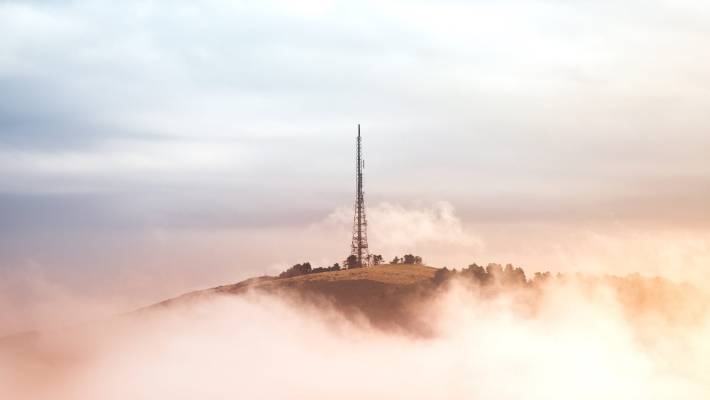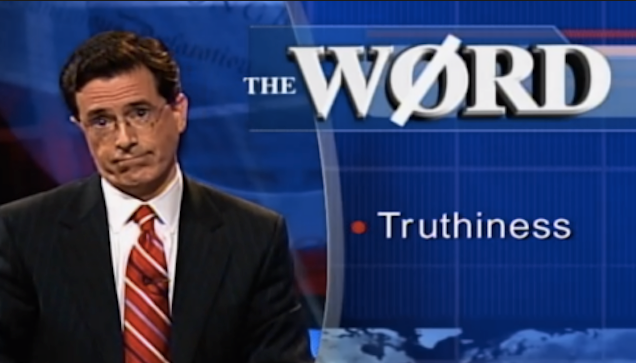s 
Welcome to another edition of #ThrowbackThursday. Today’s post is one of my favorite radio stories because it perfectly illustrates the chasm between perception and reality. It’s a true story and a learning experience you’re not going to get from a data set, AI “insights,” or a PowerPoint presentation.
When you work in radio, it helps to be a good storyteller. But the good news is that great stories are always just a minute away. When people find out you work in radio, they perk up. And then they tell you something about themselves and your business—how they feel about the medium, how it impacted their lives, and (finally) what it means to them today.
It’s amazing the things you learn when you spend a few minutes with “real people.”
This post is six years old right now, and a favorite of mine during a trip of Italy. Many things about that vacation were memorable, but as often happens, I got to hear a very unexpected radio story.
Are you ready for this? – FJ
July 2019
While in Italy earlier this month, I ran into a recent college grad from Seattle on one of our many tours. Her name was Alexa (you can’t make this up) and we got to talking about her plans, and I took the shot and asked her if she listens to the radio. She made a face, and replied with a demure “Well, sometimes.” The rest of the conversation went like this:
Me: Well, during those times when you find yourself listening to radio, what station do you usually spend time with?
Alexa: Probably 107.7.
Me: Oh yeah? What kind of music do they play?
Alexa: It’s an Alternative station.
Me: And are there any DJs on 107.7 you like?
Alexa: The morning guy is named Gregr and I do listen to him on occasion.

Gregr – KNDD/Seattle | Photo by Matt Hayward
Me: Oh, I know Gregr – great guy. Want me to reach out to him to say hi when you get back home?
Alexa: (Squeal, voice goes up several dBs) ARE YOU KIDDING ME?! He is such a COOL guy. I listen to him ALL the time, I know all his bits, his dog, “Nerd Talk.” That would be SO awesome!”
A focus group of one.
But a very telling interlude about how working in broadcast radio has morphed from being a cool career into something of an albatross. If you work in radio, you know the feeling.
You meet someone for the first time, in business or at a party, and they ask you what you do. And when you respond, “I work in radio” you wait for it. Because more and more these days, the response is likely to be:
“Oh, does anyone still listen to radio?”
As if you didn’t need any more reasons to distrust what you read online, here comes another of those “radio is dead” articles, this time by a web publication called Digital Music News.
Last week, writer Marsha Silva was the most recent scribe to pronounce radio soon to be dead as a door nail in a cheery piece – “Is Traditional Radio About to Crash? Audience Levels in America Have Been Flat for Three Years Straight.”
We’ve become used to misinformation online, whether it’s sponsored social media posts from foreign governments designed to confuse the electorate, or propagandists with an agenda. After all, if it’s on the web, it must be true.
It would be one thing if Silva’s “think piece” was well-researched and smartly conceived. But that’s not the case.
She all but dismisses Nielsen’s newest report (from their Audio Today report) showing 272 million people now listen to broadcast radio each week as “stagnation” – even though that’s up from 270 million the year before. To actually increase listenership in the teeth of the most competitive audio media environment in history is no small accomplishment for a “platform” about to celebrate its 100th year.
By all accounts, it’s been a pretty good run.
Silva writes it off as “a small bump…within the margin of error.”
She also points out (still from Nielsen’s Audio Today report) that broadcast radio outperforms television, smartphones, and computers in overall  penetration.
penetration.
But she discounts this data by noting that “radio listeners are generally less focused than users of other platforms.” She contends that ads on smartphones are more effective because users “must acknowledge them.”
And that when one considers that “listening to the radio” might really be “hearing radio” because people are unwittingly exposed to stations in stores is another reason to doubt the medium’s true reach and impact.
Silva also questions the data generated by the key source of her article – Nielsen. Now, that’s nothing new because many of you reading this aren’t always thrilled with Nielsen’s results.
But at least you know how the ratings work.
First, she notes that ratings are merely “estimates.” How can one trust the 272 million figure when it’s just an intelligent guess? But of course that ignores the fact all ratings – polls, surveys, the U.S. Census – are estimates.
Researchers make their best effort to be as accurate as possible. At the end of the day, surveys are not an exact science. And by the way, Nielsen (as well as Arbitron before it) reminds stations, agencies, and writers their numbers are, in fact, estimates.
Silva points out that Nielsen “doesn’t ask each person in the country when they listen to the radio, why they listen to the radio, how often they listen to the radio, and so on.”
Referring to Nielsen ratings as “a source of relative controversy,” she goes on to remind her readers that she doesn’t actually know the company’s ratings methodology:
 “If Nielsen’s way of measuring radio-listener demographics is similar to its way of measuring television-viewer demographics – and one would have to believe that the two are similar, both generally and because of the specifics listed at the end of the 2019 Audio Today Report – the details may surprise those who aren’t yet familiar with them.”
“If Nielsen’s way of measuring radio-listener demographics is similar to its way of measuring television-viewer demographics – and one would have to believe that the two are similar, both generally and because of the specifics listed at the end of the 2019 Audio Today Report – the details may surprise those who aren’t yet familiar with them.”
Including Silva.
And she concludes her “analysis” by reminding her readers that for radio listening in the future, “the writing is on the wall.” Not a good prognosis.
But why should anyone in radio care about this wrong-headed story in just another one of thousands of online media publications?
According to its “About” page, ““Digital Music News is the information authority for music industry and technology executives. We’re a highly influential source of news and industry analysis for millions of readers worldwide. Our audience is comprised of highly-targeted decision-makers from every segment of the business, including recordings, publishing, streaming, live concerts, talent development, venture capital, and broader tech.”
Well, let’s hope none of those people actually read Silva’s misinformed article. Because if that is an accurate description of their reach, ostensibly some media execs who control the purse strings will, in fact, read it. Other publications will re-post it, forward it, and socialize it. And before you know it, Silva’s “take” on radio will become the truth.
That’s why broadcasters need to communicate with more than just Wall Street about the industry’s health, its continued viability, and its relevance.
A communications strategy to market and position the medium is long overdue, especially in this highly caffeinated environment where “truthiness”  poses as fact.
poses as fact.
Despite the fact we now have more media outlets, more news channels, more web publications, and social platforms, we’ve never had to wallow through so much misinformation.
Traditional institutions no longer deliver trust and security. While we’re being taught to question everything, anything, and anyone, we also are being fed “alternative facts” like they’re coming out of a fire hose.
The radio industry needs to take control of its narrative, whether we’re talking to listeners, advertisers, or each other. It’s basic marketing – a skill this industry knows like the back of its hand.
And Marsha isn’t the only “journalist” to take pot shots at a medium that’s been an American fixture for nearly a century. Coverage of radio like this “story” in Digital Music News isn’t just an outlier – it’s an everyday occurrence and it’s erosive.
We all know radio is far from perfect, and under fire by competition for ears and ad budgets. The industry faces existential challenges that transcend what our forefathers endured in the 1950s when TV sets showed up in living rooms and dens seemingly overnight. It struggles to provide strong, consistent service in the face of staff and budget cutbacks. But it continues to be a reliable, steady part of the “fabric of habit” enjoyed by millions and millions of listeners from coast to coast.
It deserves better than articles like this one.
Hey, that 100th birthday is coming up in 2021 – before we know it. What’s the plan, Stan?
And by the way, I hooked Alexa up with Gregr. I need to find out how it went, but somehow I know.
You can access Nielsen’s 2019 Audio Today report here.
P.S. According to their website, Marsha Silva still writes for Digital Music News. – FJ
Originally published by Jacobs Media








